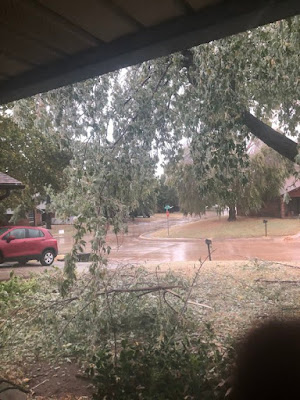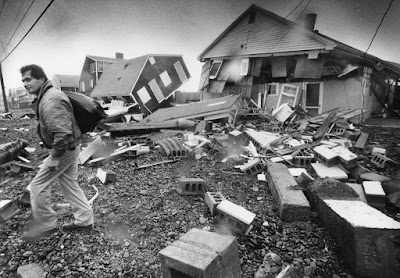Up here in the northwestern corner of Vermont, it was just cold Friday, but no drama other than that.
 |
| Traffic cam from Winhall, in southern Vermont, still shows a decent amount of snow on the ground this morning. |
It was a completely different story in parts of southern and central New England, which was genuinely hit by an early season snowstorm.
The records set in Boston were especially impressive. That city recorded 4.3 inches of snow, smashing the previous record for an October snowstorm. The old record was 1.1 inches set in October, 2005.
Oddly, Friday's snowstorm in Boston was their largest so far in this year. The biggest snowfall for 2020 up to this point was three inches on January 18.
Boston this year also had a late snowfall on April 18, with 0.7 inches of snow. That means this year's 193-day stretch between measurable snows in the spring and autumn was the shortest on record.
Coastal Massachusetts can and does get huge winter snowstorms, of course. But things have to align just right for those areas, including Boston, to get a decent snow. These snowfalls typically come with nor'easters. If the center of any of these storms ventures too close to the coast, enough warm air sneaks in to quickly change snow to rain.
This time, the storm moved far enough off the coast to bring a snowfall to Boston.
Elsewhere, Worcester, Massachusetts had its third largest October snowstorm with 6.2 inches.
Southern and eastern Vermont shared in the snowfall late Thursday and Friday morning, but it didn't set any early season records. Andover, Vermont reported 3.5 inches of snow, and Danby had three inches. There were widespread reports of one to two inches of snow across southern and much of eastern Vermont.
As I'm sure everybody has noticed, the snow was followed by a really cold moment this morning. The notorious cold spot Saranac Lake, New York bottomed out at 7 degrees. In Vermont, Island Pond got to at least 12 above zero.
In southern New England, record lows were tied at Hartford, with 21 degrees, and Providence, Rhode Island, with 24 degrees.
We're in for another, possibly stronger cold shot Sunday night through Tuesday. This time, accumulating snow is a good bet in northern Vermont, which missed out on Friday's snowfall.
A strong cold front will pass through Sunday night, and low pressure might form along that front east of here. That would throw at least some snow our way. It probably won't amount to too much in the Champlain Valley, but a few inches could come down in the mountains.
Monday will be brutally cold for early November, as temperatures fall through the 30s amid gusty north winds and continued snow showers.
A secondary disturbance will create more snow and wind Monday night and Tuesday, again with the highest accumulations in the mountains.
Luckily, this won't be like last November, when winter set in for good during the beginning of the month. This year, we'll get an abrupt shift to warmer weather mid-week, with highs in the 50s by Thursday and near 60 by Friday.
























